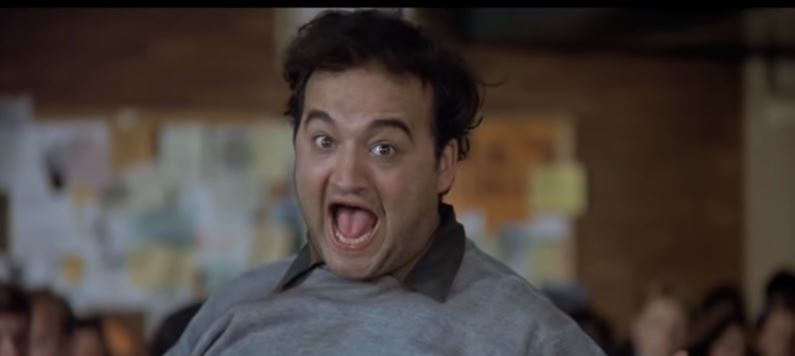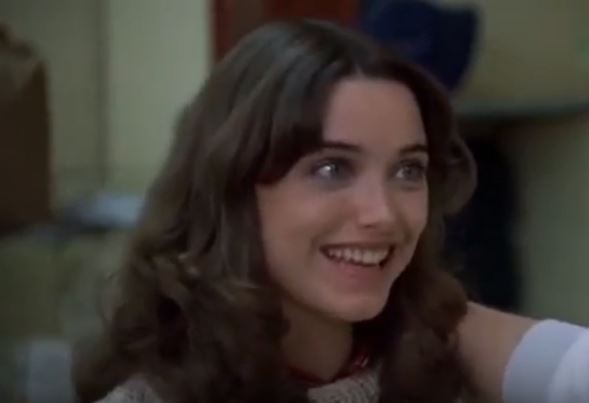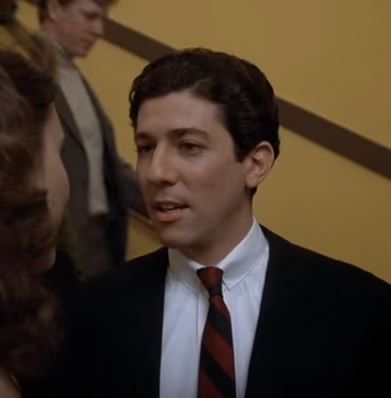
“Animal House” is one of the funniest movies in Hollywood history, and it helped launch a new genre of wild and raunchy comedies that helped define a generation with films like “Caddyshack,” “Stripes” and “Fast Times at Ridgemont High.” Over the years, other writers and directors were inspired by “Animal House” to create films like “Old School,” “Wedding Crashers,” “American Pie” and “The Hangover.”
The movie was released in 1978 but was set at the fictional Faber College in 1962. It celebrated the excesses of the college experience as told through a motley crew of characters at the Delta house, with their foils represented by the preppy and stiff gang at the Omega house. (Watch the original trailer here)
“Animal House” was Written by Harold Ramis, Douglas Kenney and Chris Miller and brilliantly directed by John Landis. The film starred John Belushi in his iconic role as Bluto and featured Tim Matheson as Otter, Tom Hulce as Pinto, Stephen Furst as Flounder, James Widdoes as Hoover, Bruce McGill as D-Day, Peter Riegert as Boone and the lovely Karen Allen as Katy. Meanwhile, Mark Metcalf as Neidermeyer and James Daughton as Greg Marmalard were brilliant leading the douche bag Omegas, with Kevin Bacon having a small part in that crew as well.
The making of “Animal House”
Looking back now on the cast, director, writers and producers, it’s not much of a surprise that they create a monster hit. But most of them were so young at the time, so success wasn’t guaranteed. The story behind the making of “Animal House” is fascinating and also an inspiration to aspiring filmmakers. As expected, there are a number of documentaries and television segments looking back on the making of the film. The DVD sets include a 98-minute documentary that fans will enjoy.
The best documentary we’ve seen on this topic is “Animal House: The Inside Story” filmed in 2008 which ran on the Biography Channel. Most of the cast participated and we learned how John Landis created an interesting dynamic on the set by mostly separating the Deltas and the Omegas. Needless to say the cast members playing the Deltas had much more fun!
The following “making of” feature is available on YouTube, with plenty of emphasis on the importance of Landis’s casting choices, which weren’t very popular with the studio. The studio wouldn’t green light the film until a name actor was added, and Donald Sutherland fit the bill when he was cast as the professor who hooks up with Katy.
In this clip, Tim Matheson shares some behind the scenes Polaroid photos from the set, and mentions how Director John Landis wouldn’t give writer Harold Ramis a part in the film and how he also rejected Chevy Chase for the role of Otter ultimately played by Matheson.
Bullz-Eye Content
Over the years we had the opportunity to interview Karen Allen and Peter Riegert in connection with another project. Will Harris conducted both interviews and naturally brought up “Animal House.”
Karen Allen
Karen Allen was perfectly cast as Katy with her killer smile and “girl next door” looks. We all felt Boone’s pain when he caught her with the professor. Karen explained in her interview: “It was my first film, yes. And, basically, I recall having an awful lot of fun with everybody. I mean, it was the first film for most of us, so we were just sort of learning what to do as actors. Most of us came out of the theater, so we were not inexperienced as actors, but we were certainly inexperienced in terms of working on a film set. Fortunately, we had John Landis, who, again, was not very experienced, but he had had some experience. He had done a couple of very independent films. So, you know, it was a very seat-of-the-pants experience, and we had a lot of fun together, and who knew that it would turn out to be such a classic comedic film? But I think we were very lucky to have that as our first film.”
Peter Riegert
Boone wasn’t the craziest character in the Delta house, but he provided some classic lines in the film. Peter offers some interesting perspective in his interview: “What was nice about “Animal House” was that the writers were so smart, and it really had a political overtone to it, and the genius of it was that it was a period piece. Remember, it was set in 1962, so it had a mythological quality to it beyond the story. It wasn’t about its time. I mean, it was about another time, one that was very innocent: before Kennedy was killed, before Vietnam, before the modern women’s movement. It’s pretty extraordinary. So all of that stuff was bubbling out of the story, and it was speaking to a generation that was just coming into its own financial power, in terms of going to the movies.”
Movie Tunes: The Top 40 music moments in film history
The music was such a big part of the success of the movie. The selection of 60s rock classics was essential to the mood of the film, particularly the party scenes. We noted several of these songs in this feature:
#7 “Shout,” Otis Day & the Knights
It is quite possible that without this scene, this tune from the Isley Brothers vanishes in the mists of time altogether, never to be heard again. But thanks to the visual performance by Otis Day & the Knights (but, like the C&C Music Factory, the song was actually sung by Lloyd Williams) during the toga party scene in “Animal House,” the song, and this scene, will bury us all. The editing back and forth between Otis Day and the packed dance floor of toga-wearing, wavin’-‘em-like-they-just-don’t-care partygoers is thrilling, laying the groundwork for the first wave of prominent music video directors. The plot doesn’t advance an inch throughout the entire song (save for Pinto making out with his jailbait girlfriend), but comes crashing back at song’s end – quite literally, in fact – when Dean Wormer’s wife, drunk and wookin’ pa nub from Otter (Rush Chairman, damn glad to meet ya), slams her car into someone else’s back fender. “Shout,” “Animal House” and toga parties: they are bound together (seen that recent Aquafina commercial?), and let no man tear them asunder. Not that anyone could if they tried. (Watch the scene here)
#30 “Louie, Louie,” The Kingsmen
Legend has it that director John Landis added this performance to the script after hearing Belushi’s drunken and obscene version at an after-rehearsal bacchanalia. Is it true? Who cares? It’s an inspired choice of music in a scene that’s easily believable as the capper to a long day and night of drinking, fraternity, and brotherhood for all. The scene sparked a “Louie, Louie” revival; two albums of nothing but covers of this one song were released, radio stations had on-air LL marathons, and that whole “unintelligible at any speed” thing was argued yet again. I was a high school junior when it was released, and my friends and I would perform this number at parties for the next two years…loudly, drunkenly, and after careful review of the VHS, with what we believed to be the correct dirty lyrics added by the cast. (Watch the scene here)
“Animal House” Movie Review – 5 stars
Was there any doubt we would give this movie 5 stars? It pretty much defines what our site is all about. Check out the review for some info on the various DVD versions as well.
Related Content
Drink of the Week: TCM Fest 2018 Salute #4 – Animal House
Check out the frosty cocktail our cocktail writer Bob Westal created to try and capture the anarchic spirit of the comedy that launched 10 million toga parties and food fights. Bourbon and beer are the featured players, naturally.
More Resources
Roger Ebert Review
The iconic critic gave the film his top rating of 4 stars, which is impressive since he trashed many of the raunchy comedies that followed “Animal House.” He really nails it in this review, as only Roger can . . .
The movie is vulgar, raunchy, ribald, and occasionally scatological. It is also the funniest comedy since Mel Brooks made “The Producers” (1968). “Animal House” is funny for some of the same reasons the National Lampoon is funny (and Second City and “Saturday Night Live” are funny): Because it finds some kind of precarious balance between insanity and accuracy, between cheerfully wretched excess and an ability to reproduce the most revealing nuances of human behavior.